Last Updated
This year’s whale watching season is well underway in Los Cabos, and a recent incident with a couple of these giant creatures getting really close to a boat with tourists just went viral. The video that the woman shared shows how shocked they were by the whales and was a reminder that not everyone knows what to expect when they go whale watching. So, if you’re planning to go whale watching during your Cabo vacation, read on to learn what to expect on a whale-watching tour in Los Cabos.

Be Prepared For Whales To Get Close
As can be seen in this recent incident, whales can get pretty close to the boat you’re on when you’re out whale watching. Sometimes boats are even hit by whales, and in rare cases, tourists have been injured. To help avoid injuries resulting from having one of these massive creatures hit the boat, whale watchers should stay seated during the tour and follow all safety guidelines provided by the tour operator.
@melissaicaza Replying to @Humbert ♬ original sound – Melissa Icaza
Prepare For The Temperature To Be Cooler On The Water
Temperatures remain pretty mild throughout the year in Los Cabos, typically between 60-80 degrees during the winter months, when it is also whale watching season. But when you’re in a boat out on the water, the temperature can be considerably cooler, particularly in the morning. To ensure you’ll be comfortable in the changing temperatures, it’s a good idea to wear layers so you’ll be warm enough but can shed layers if you’re too hot as well.
Top 5 Travel Insurance Plans For 2023 Starting At $10 Per Week
Easily Earn Points For Free Travel
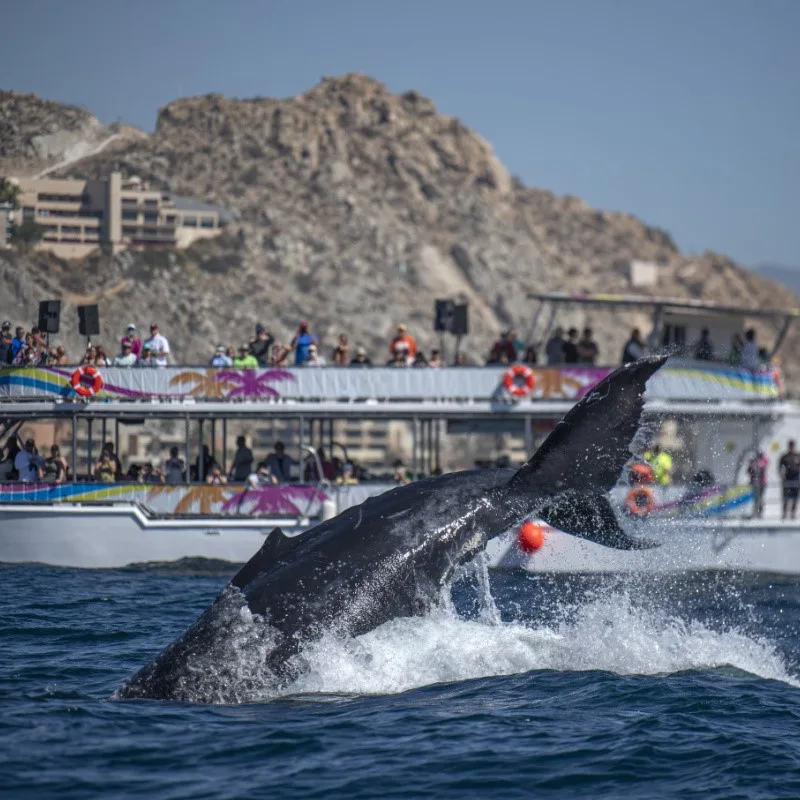
Plan To Combat Seasickness
Even if you do not customarily suffer from seasickness, you may want to prepare for it just in case. The boats used for whale watching are on the smaller side, and the water can get a little rough at times. There are all kinds of options to help avoid and treat seasickness, like Dramamine, wrist bands, and patches, and it doesn’t hurt to bring something along just in case.
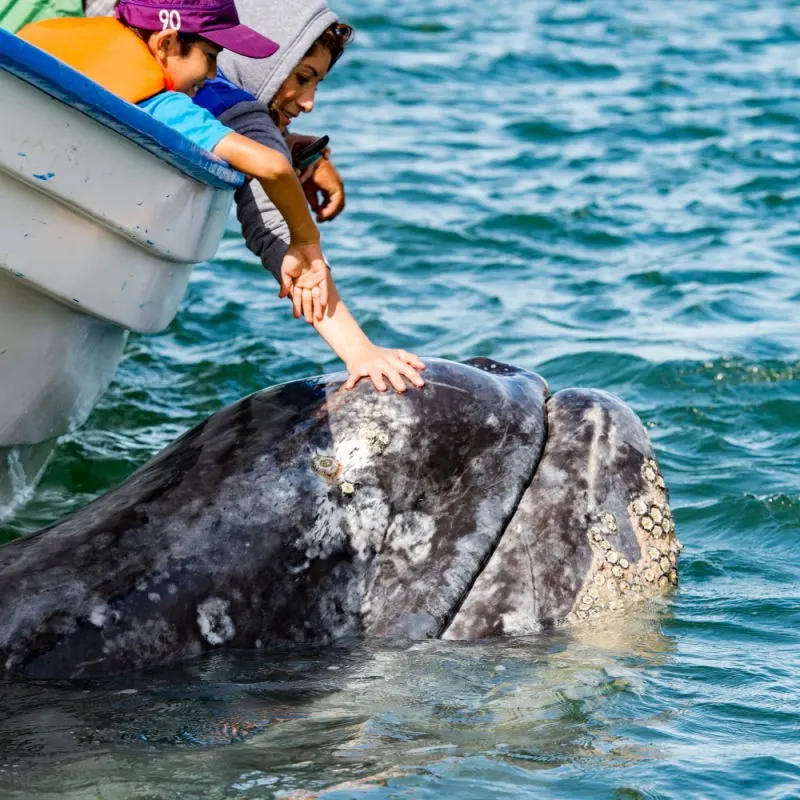
Expect To Be Gone For A Few Hours
Most whale-watching tours in Los Cabos last for about 2-3 hours, plus you have to take into consideration your travel time. Altogether you should plan to be gone for at least a few hours, so you’ll want to take any medications you might have to take during that time with you. You’ll also want to be sure to eat something before your trip or bring food and water with you if it is not offered on the tour.
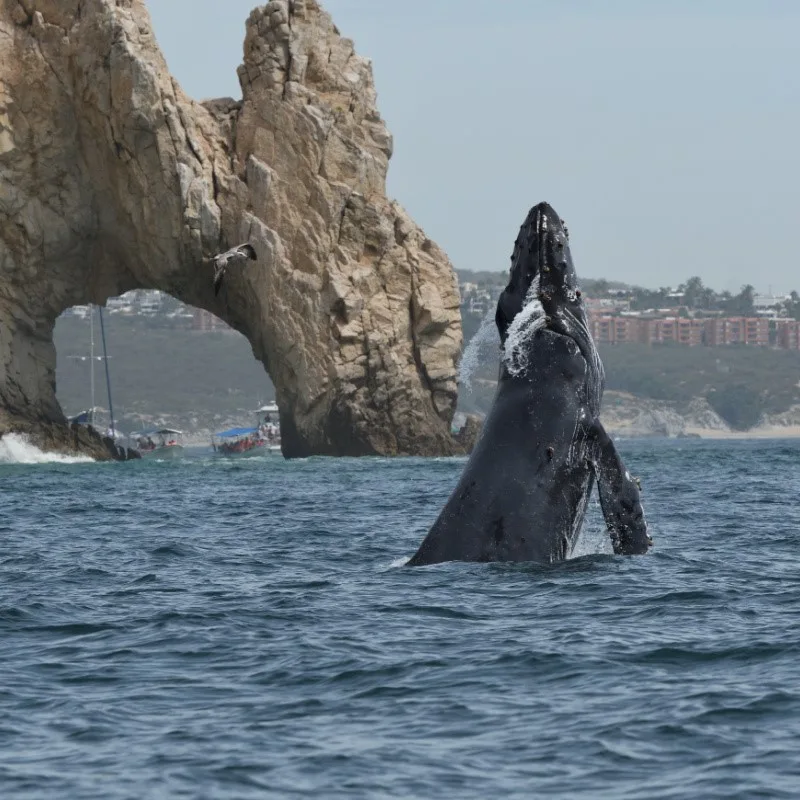
What Kind Of Activity To Expect From Whales
If you have never been on a whale-watching tour, you may be surprised at how active these giant sea mammals can be. Much of the time, they are hunting for food, but since they have to come up for air, it’s very likely you’ll see them come up to the surface and may even see them spout water. If you’re really lucky, you’ll get to see a whale breach, which is when they leap out of the water, allowing you to see almost their entire body.
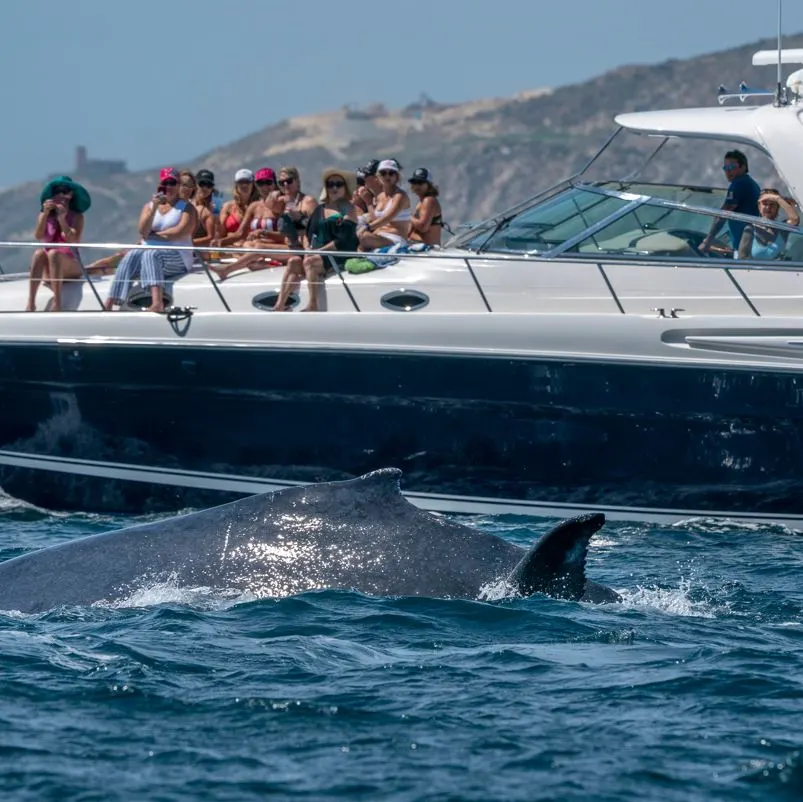
What Types Of Whales To Expect To See
Humpback whales are the most commonly seen species in Los Cabos, but you’re very likely to see other species too. Gray and blue whales are the next most common types of whales to see, but you may see sperm whales, fin whales, or Bryde’s whales as well. Some species are seen more at certain times during the season, so be sure to ask your tour guide what species you can expect to see when you arrive for your tour.
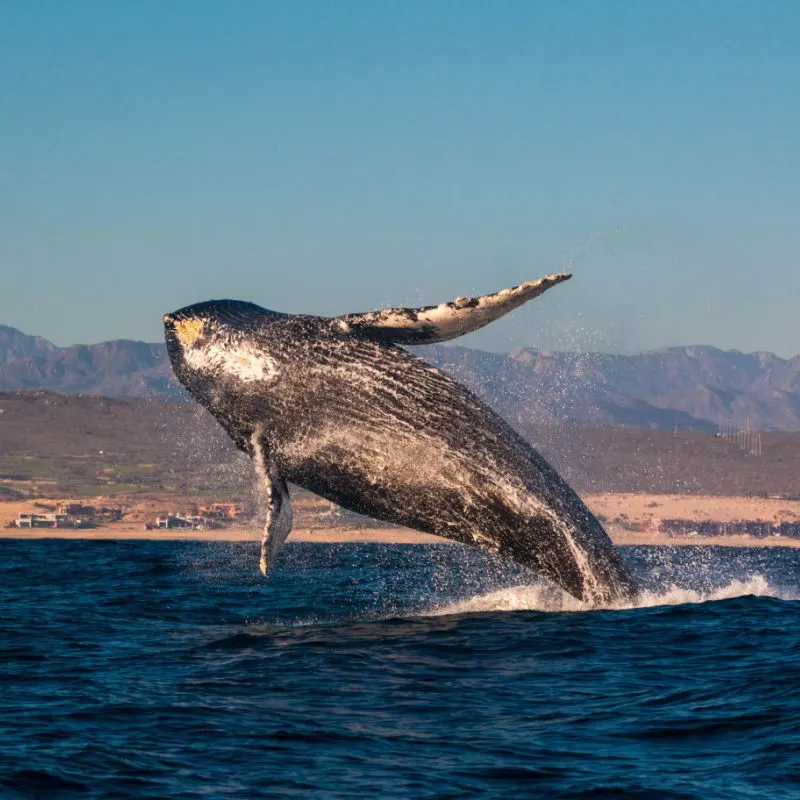
Whale watching can be an exciting adventure, and being prepared for your whale-watching tour in Los Cabos will make it all the more of an enjoyable experience. It will also prepare you for those rare moments when one of these giant creatures gets a little too close for comfort.
Plan Your Next Cabo Vacation:
Traveler Alert: Don’t Forget Travel Insurance For Your Next Trip!
Choose From Thousands of Cabo Hotels, Resorts and Hostels with Free Cancellation On Most Properties
↓ Join The Community ↓
The Cabo Sun Community FB group has all the latest travel news, conversations and current events happening in Los Cabos

Subscribe to our Latest Posts
Enter your email address to subscribe to The Cancun Sun’s latest breaking news affecting travelers, straight to your inbox.
